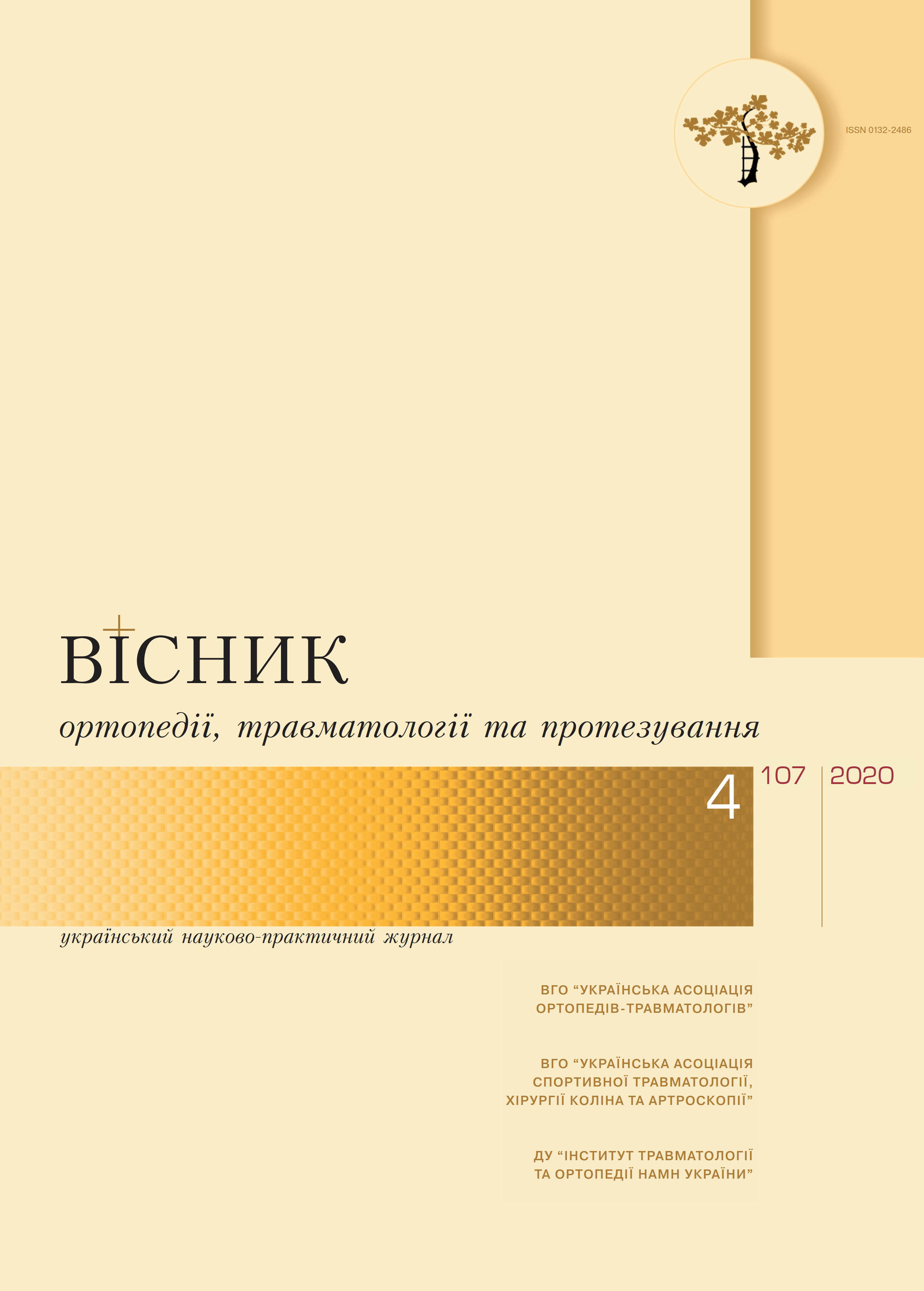Abstract
Summary. Tissue defects of the anterior surface of the lower leg and the knee joint is a severe problem at the treatment of orthopedic patients.
Objective. Analysis of the results of using the medial gastrocnemius flap (MGF) in orthopedic patients; highlighting peculiarities of surgical technique.
Materials and Methods. 8 patients (10 cases) who underwent the transposition of the MGF. The age of the patients was 19–74 years (on average 40.5±5.7 years); there were 6 males and 2 females. The list of cases: open fractures – 2 cases, combat injury – 2 patients (3 cases), skin necrosis after osteosynthesis – 3 patients (4 cases), and skin necrosis after total knee replacement – 1 case. The results of treatment were assessed in terms 9 months – 10 years by the Lysholm scale.
Results. Autodermoplasty during MGF transposition was performed in two cases and after a few days in others. In cases with open fractures, the osteosynthesis and external fixators reassembly were done; conversion of osteosynthesis was performed one month after autodermoplasty. In cases of skin necrosis after osteosynthesis and total arthroplasty, the implants were never removed. Knee function according to the Lysholm scale ranged from 70 to 100 points (mean 88.2±3.3).
Conclusions. The transposition of the MGF for the replacement of tissue defects of the anterior surface of the lower leg and knee joint is an effective method in orthopedic surgery, which helps to solve the problem of infectious complications and to save the supporting-kinematic function of the lower extremity.
References
Mathes SJ, Nahai F. Classification of the vascular anatomy of muscles: experimental and clinical correlation. Plast Reconstr Surg. 1981; 67(2):177-87. PMID: 7465666.
D’Avila F, Franco D, D’avila B, Arnaut M, Jr. Use of local muscle flaps to cover leg bone exposures. Rev Col Bras Cir. 2014; 41(6):434-9. DOI: 10.1590/0100-69912014006009.
Ebrahimi A, Nejadsarvari N, Ebrahimi A, Rasouli HR. Early reconstructions of complex lower extremity battlefield soft tissue wounds. World J Plast Surg. 2017; 6(3):332-42. PMID: 29218283.
Tetreault MW, Della Valle CJ, Hellman MD, Wysocki RW. Medial gastrocnemius flap in the course of treatment for an infection at the site of a total knee arthroplasty. JBJS Essent Surg Tech. 2017;7(2):e14(1-13). DOI: 10.2106/JBJS.ST.17.00005.
Veber M, Vaz G, Braye F, Carret JP, Saint-Syr M, Rohrich PJ, Mojallal A. Anatomical study of the medial gastrocnemius muscle flap: a quantitative assessment of the arc of rotation. Plast Rec Surg. 2011; 128(1):181-7. DOI: 10.1097/PRS.0b013e318217423f.
Henkelmann R, Frosch KH, Glaab R, Lill H, Schoepp C, Seybold D et al. Infection following fractures of the proximal tibia - a systematic review of incidence and outcome
BMC Musculoskelet Disord. 2017;18(1):481. DOI: 10.1186/s12891-017-1847-z.
Choo KJ, Morshed S. Postoperative complications after repair of tibial plateau fractures. J Knee Surg. 2014; 27(1):11-19. DOI: 10.1055/s-0033-1363517.
Doucet JJ, Galarneau MR, Potenza BM, Bansal V, Lee JG, Schwartz AK et al. Combat versus civilian open tibia fractures: the effect of blast mechanism on limb salvage. J Trauma 2011; 70:1241-7. DOI: 10.1097/TA.0b013e3182095b52.
Cui H, Xiao H, He K, Peng Y, Bian Z, Wang H. V-Y advancement of medial gastrocnemius muscle flap for repairing soft tissue defects in middle and lower segments of anterior tibia. Zhongguo Xiu Fu Chong Jian Wai Ke Za Zhi. 2016; 30(9):1122-6. DOI: 10.7507/1002-1892.20160228.

This work is licensed under a Creative Commons Attribution 4.0 International License.

